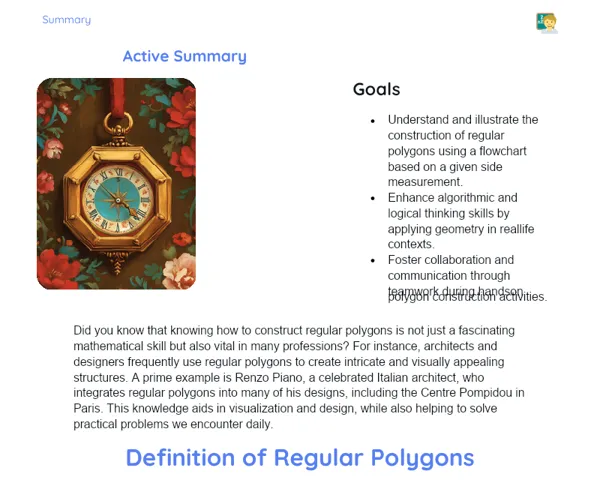Objectives
1. Build proficiency in solving quadratic equations of the form ax^2 = b.
2. Utilize mathematical concepts to tackle everyday challenges and professional scenarios, emphasizing the significance of quadratic equations in various practical contexts.
Contextualization
Did you know that quadratic equations play a vital role in fields like engineering and physics? For instance, Hooke's law, which describes the force required to compress or stretch a spring, can be represented through a quadratic equation. This illustrates that grasping these equations isn't just about theory; it has real-world implications that directly influence our technological and scientific advancements!
Important Topics
Concept of Quadratic Equations (ax^2 = b)
Quadratic equations represent a standard class of polynomial equations involving variables raised to the second degree. The general format of a quadratic equation is ax^2 = b, where 'a' and 'b' are constants, and 'x' is the variable we're looking to find. This type of equation is incredibly versatile and surfaces across multiple areas, ranging from simple calculations to complex applications in fields like physics and engineering.
-
'a' and 'b' are the constants we know, while 'x' is the variable we aim to solve for.
-
To solve a quadratic equation, we find the square root of b/a. Depending on the value of 'a', the equation could yield two real solutions, one real solution, or none at all – a key concept for addressing different real-life challenges.
-
Mastering the skill of solving quadratic equations is essential for deepening one's understanding of algebra and preparing students for more advanced mathematical and scientific applications.
Methods of Resolution
There are various approaches to solving quadratic equations, including factoring, completing the square, and using the quadratic formula. Each method has its unique strengths and suits different kinds of equations. The quadratic formula, for instance, is an effective tool applicable to any quadratic equation, regardless of its complexity.
-
Factoring is often the simplest and most powerful approach for solving quadratic equations when it's applicable, but not all equations can be factored; that’s when the quadratic formula becomes useful.
-
Completing the square is a technique that rearranges the equation into a solvable format, especially advantageous for equations that are not easily factorable or straightforward to apply the quadratic formula directly.
-
The quadratic formula, x = (-b ± √(b^2 - 4ac)) / 2a, can be used for any quadratic equation, enabling you to identify its real roots when they exist.
Practical Applications of Quadratic Equations
Quadratic equations are often used to model real-world situations, such as projectile motion, fluid dynamics, and financial analysis. For instance, the equation 2x^2 = 8 can illustrate calculating the maximum force a material can withstand, which is crucial in engineering. These real-life applications help connect abstract mathematical concepts to tangible situations, making learning more relatable.
-
In physics, quadratic equations model the motion of objects affected by gravity, determining aspects such as the maximum height achieved by a thrown object or the trajectory of a projectile.
-
In finance, these equations are instrumental in computing compound interest and examining economic trends like supply and demand.
-
Grasping and applying quadratic equations in these contexts equips students for their future careers in science, engineering, economics, and more.
Key Terms
-
Quadratic Equation: A polynomial equation of degree 2 in the form ax^2 + bx + c = 0, where 'a', 'b', and 'c' are real coefficients, and 'x' is the variable.
-
Quadratic Formula: A mathematical equation providing solutions for any quadratic equation: x = (-b ± √(b^2 - 4ac)) / 2a.
-
Roots of the Equation: The values of 'x' that satisfy the equation, making both sides equal to zero.
For Reflection
-
How does solving quadratic equations enhance our understanding of natural phenomena, like the trajectory of an object in motion?
-
Why is it critical to master various methods of solving quadratic equations rather than relying solely on one technique?
-
How can knowledge of quadratic equations assist in personal financial decisions or in engineering and architecture projects?
Important Conclusions
-
In this lesson, we delved into the intriguing world of quadratic equations, learning how to solve them and apply these concepts to everyday challenges and professional realms like engineering and physics.
-
We examined various resolution methods, including factoring, completing the square, and the well-known quadratic formula, highlighting their significance and application in specific scenarios.
-
We acknowledged the relevance of quadratic equations in modeling real-life situations, from projectile motions to financial calculations, paving the way for advanced applications and preparing you for future endeavors.
To Exercise Knowledge
- Compile a list of common challenges you face in daily life, such as estimating travel distance in a race or figuring out the fall time of an object. Solve these challenges using quadratic equations. 2. Design a small project aimed at creating a virtual amusement park, where you must calculate launch angles and distances using quadratic equations to optimize the attractions' performance. 3. Write a brief article discussing the significance of quadratic equations in a profession of your choice, such as architecture, healthcare, or technology.
Challenge
Mathematics Detective Challenge: Analyze a collection of quadratic equations solved through various methods. Your task is to determine which method was employed for each equation, discussing why that specific method was chosen and whether it was the most efficient strategy. Present your findings through a video or a creative presentation to the class.
Study Tips
-
Regularly practice solving quadratic equations with diverse problems and try out different methods to build your proficiency and confidence.
-
Utilize online resources, including tutorial videos and equation simulators, to visualize quadratic concepts in practice and enhance your understanding.
-
Form study groups with peers to collaboratively discuss and tackle challenging problems, clarifying doubts and enriching your grasp of the topic.


